

Catherine Langeais
Born: August 9, 1923
Died: April 23, 1998
in Valence, Drome, France
Died: April 23, 1998
in Valence, Drome, France
Catherine Langeais, born Marie-Louise Terrasse, (9 August 1923 in Valence, Drôme – 23 April 1998 in Mantes-la-Jolie, Yvelines), was a French television presenter and actress.
Her father was André Terrasse (1890-1951), an economic journalist and secretary to the Alliance démocratique, and her mother was Marthe Brossette, daughter of François Brossette, mayor of Givors. The family lived in Paris from 1933.
On 28 January 1938, at the age of fourteen, when Marie-Louise was at a school dance, she was introduced by her brother to the politician and future president of the French Republic François Mitterrand. In March 1940, in spite of her youth, they became engaged, but they separated on 15 January 1942, when the Germans occupied France. During that time he sent her more than 300 letters and poems. Then in 1944 Mitterrand married Danielle Gouze whom he met in a resistance network, and Marie-Louise married a Polish count Antoine Gordowski, with whom they had two children, Jean-Michel and Élisabeth. They separated in 1949 and divorced in 1954.
Initially recruited to present the programmes of the new national television network RTF in 1949, Catherine Langeais was probably the most popular lady presenter (speakerine) of French television, from the end of the 1950s through the 1970s. It was she who welcomed BBC viewers in the first international on-line television broadcast, the Franco-British week of July 1952, thanks to the new conversion standard which was to allow, a year later, the international broadcast of the Coronation of Queen Elizabeth II, and later the inauguration of the Eurovision song contest.
In parallel with introducing programmes, Catherine Langeais took part in diverse light entertainment programmes in the years 1950–1960, such as "C'est arrivé à 36 chandelles" and "La séquence du spectateur" (later renamed "La séquence du téléspectateur"), as well as the cookery programme "Art et magie de la cuisine" with the chef Raymond Oliver.
A chronic illness, which she concealed for a long time, made the job difficult but did not prevent her from working until 1955. Patiently, although ill, she continued with her programmes ("A vous de juger", "La séquence du téléspectateur", and some children's programmes). On Sunday 5 January 1975, she emotionally closed the broadcasts of the first channel (ORTF), which was replaced the next day with the new public company Télévision Française 1 (TF1) in which she did no more than the voice-overs of the "La séquence du téléspectateur", while her husband Pierre Sabbagh was director of programmes for the second channel.
In 1987, François Mitterrand presented her with the Légion d'honneur award for her undeniable imprint on the history of French television.
She married television producer and director Pierre Sabbagh, creator in 1949 of the first daily television news channel in the world. They had no children.
Behind the official image she presented as "la fiancée des français", obsessed with appearance, she was a complex, courageous woman who throughout her life secretly fought illness. She died from multiple sclerosis in 1998 and was buried in Valmondois cemetery near Paris.
Source: Article "Catherine Langeais" from Wikipedia in English, licensed under CC-BY-SA 3.0.
Her father was André Terrasse (1890-1951), an economic journalist and secretary to the Alliance démocratique, and her mother was Marthe Brossette, daughter of François Brossette, mayor of Givors. The family lived in Paris from 1933.
On 28 January 1938, at the age of fourteen, when Marie-Louise was at a school dance, she was introduced by her brother to the politician and future president of the French Republic François Mitterrand. In March 1940, in spite of her youth, they became engaged, but they separated on 15 January 1942, when the Germans occupied France. During that time he sent her more than 300 letters and poems. Then in 1944 Mitterrand married Danielle Gouze whom he met in a resistance network, and Marie-Louise married a Polish count Antoine Gordowski, with whom they had two children, Jean-Michel and Élisabeth. They separated in 1949 and divorced in 1954.
Initially recruited to present the programmes of the new national television network RTF in 1949, Catherine Langeais was probably the most popular lady presenter (speakerine) of French television, from the end of the 1950s through the 1970s. It was she who welcomed BBC viewers in the first international on-line television broadcast, the Franco-British week of July 1952, thanks to the new conversion standard which was to allow, a year later, the international broadcast of the Coronation of Queen Elizabeth II, and later the inauguration of the Eurovision song contest.
In parallel with introducing programmes, Catherine Langeais took part in diverse light entertainment programmes in the years 1950–1960, such as "C'est arrivé à 36 chandelles" and "La séquence du spectateur" (later renamed "La séquence du téléspectateur"), as well as the cookery programme "Art et magie de la cuisine" with the chef Raymond Oliver.
A chronic illness, which she concealed for a long time, made the job difficult but did not prevent her from working until 1955. Patiently, although ill, she continued with her programmes ("A vous de juger", "La séquence du téléspectateur", and some children's programmes). On Sunday 5 January 1975, she emotionally closed the broadcasts of the first channel (ORTF), which was replaced the next day with the new public company Télévision Française 1 (TF1) in which she did no more than the voice-overs of the "La séquence du téléspectateur", while her husband Pierre Sabbagh was director of programmes for the second channel.
In 1987, François Mitterrand presented her with the Légion d'honneur award for her undeniable imprint on the history of French television.
She married television producer and director Pierre Sabbagh, creator in 1949 of the first daily television news channel in the world. They had no children.
Behind the official image she presented as "la fiancée des français", obsessed with appearance, she was a complex, courageous woman who throughout her life secretly fought illness. She died from multiple sclerosis in 1998 and was buried in Valmondois cemetery near Paris.
Source: Article "Catherine Langeais" from Wikipedia in English, licensed under CC-BY-SA 3.0.
Movies for Catherine Langeais...
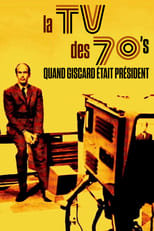
Title: La TV des 70's : Quand Giscard était président
Character: Self (archive footage)
Released: January 7, 2022
Type: Movie
In May 1974, Valéry Giscard d'Estaing became President of the Republic and wanted to bring about a new era of modernity. One of his first decisions was to break up the ORTF with the creation of three new television channels: TF1, Antenne 2 and FR3. Three new public channels but autonomous and competing. It is a race for the audience which is engaged then, and from now on the channels will make the war! This competition will give birth to a real golden age for television programs, with variety shows in the forefront. The stars of the song are going to invade the living rooms of the French for their biggest pleasure. This unedited documentary tells the story of the metamorphosis of this television of the early 1970s, between freedom of tone, scandals, political intrigues and programs that have become mythical.

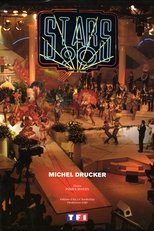

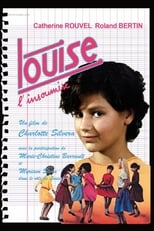
Title: Louise... l'insoumise
Character: Speaker (voice)
Released: March 13, 1985
Type: Movie
While watching the others on her TV screen, Louise becomes a rebellious girl.

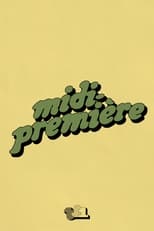
Title: Midi Première
Character: Self
Released: January 6, 1975
Type: TV
Midi Première is a French variety show presented by Danièle Gilbert, directed by Jacques Pierre and broadcast from January 6, 1975 until January 1, 1982 on TF1. The program was generally broadcast between 12:15 p.m. and 12:55 p.m., then giving way to the 1:00 p.m. TV news. However, the broadcast schedule could change, depending on the guests, and the setting where the recording of the program was shot. Certain performances by artists who have become cult like the one where Ringo jostles with a demonstrator in interpretation (1977), that of Dalida with the title There is always a song with the soundtrack that does not start, twice, at the right speed (1978), Claude François and his Clodettes, who, in the provinces, are unable to join "the set" in order to interpret his song, the latter being taken by the crowd of delirious fans (summer 1977) . The group Supertramp performed there with the title "Dreamer" on March 8, 1975.




Title: Un clair de lune à Maubeuge
Character: Self (uncredited)
Released: December 19, 1962
Type: Movie
Paul, a friendly Parisian cab driver, has two loves: music and his fiancée Virginie. After graduating from the Conservatoire with a first prize, he lives on hope, offering his classical works to publishers. One day, while driving customers to the races, he plays a "toquard": Maubeuge, who wins. With his friends, he celebrates the event and, for dessert, composes a song for the occasion: "Tout ça ne vaut pas un clair de lune à Maubeuge". Monique, a secretary at the radio station and one of the guests, had a record made of the tape recording. And this record, following a mistake, was broadcast on a religious music program. It's a runaway success: for Paul, it's fame and fortune. which he had obviously coveted, but more with his symphonies, opera and sonatas. No matter, the "Clair de lune à Maubeuge" (Moonlight in Maubeuge) allows two happily engaged couples to become happily married.

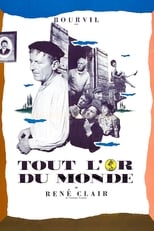
Title: All the Gold in the World
Character: la speakrine
Released: November 1, 1961
Type: Movie
Businessman Victor Hardy wants to buy the entire area around the small village of Cabosse. He claims that he wants to return to nature, but he also intends to profit by selling the water from the village fountain, which is reputed to enhance longevity. However old farmer Mathieu and his sons don't want to sell...

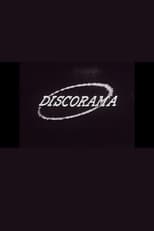

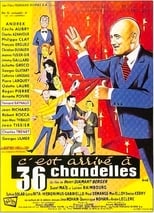
Title: It Happened on the 36 Candles
Character: Self (uncredited)
Released: October 16, 1957
Type: Movie
Rejecting the union of her daughter Brigitte with a modest worker, Madame Magnin invents an adultery for the lover, then introduces Brigitte to a good-looking man working on the famous RTF entertainment show 36 Chandelles. The show ultimately seals the reunion of the two estranged young lovers. The story features a parade of music-hall stars from the era: Charles Trenet, Charles Aznavour, Georges Guétary, Juliette Gréco, Roger Pierre and Jean-Marc Thibault, Fernand Raynaud, Georges Ulmer and many more.
